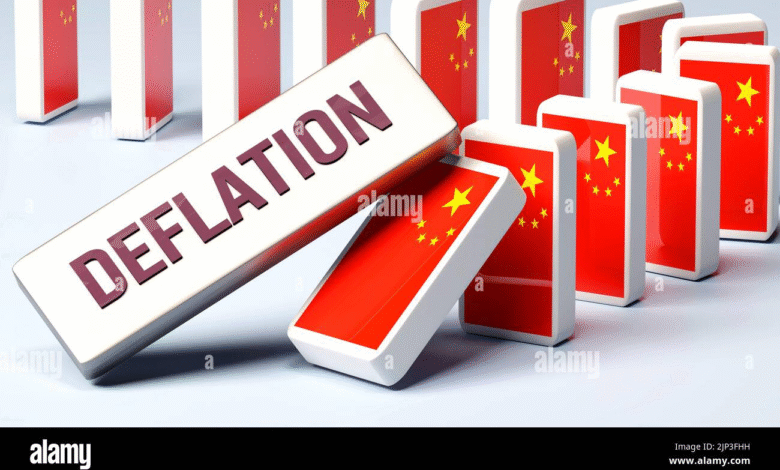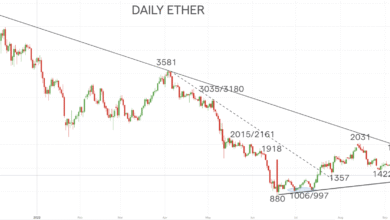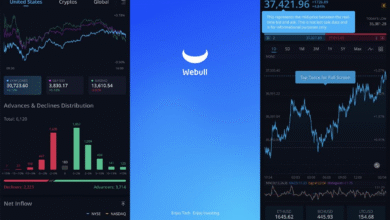China Deflation: Understanding Its Impact on the Economy

China deflation has emerged as a pressing concern within the broader landscape of the China economy, as a series of relentless price wars destabilizes various industries, from coffee to cars and real estate. This downward trend in consumer prices not only underscores the deflation effects but also highlights a troubling cycle of competition that threatens the viability of many businesses. Economists warn that as companies slash prices to attract customers, they inadvertently undermine their revenue potential, creating an unsustainable environment. With such mounting pressures, the repercussions extend beyond the market; the electric vehicle competition and struggles in the real estate sector further illustrate the vast implications of deflation in China. The challenge lies not just in overcoming these price wars but in fostering an economic strategy that ushers in stability and growth.
The phenomenon of deflation in China has sparked widespread debate among experts, revealing underlying issues within the nation’s economic framework. As businesses across various sectors engage in fierce price reductions to remain competitive, the consequences ripple through the entire market landscape. This continuous state of ‘price deflation’ poses significant challenges for consumer spending and industrial profitability, raising concerns about the long-term health of the Chinese economy. Analysts are particularly focused on how this ongoing battle for market share, especially in industries like electric vehicles and property, may give rise to adverse trends such as increased unemployment and diminished investor confidence. In light of these dynamics, it’s crucial to understand the intricate balance policymakers must strike to mitigate the adverse effects of deflation and stimulate sustainable growth.
Understanding China’s Deflation Crisis
China is currently facing a significant deflation crisis that is impacting various sectors of its economy. With consumer prices declining by 0.1% and factory-gate prices dropping even more sharply by 2.8%, the signs of economic stress are evident. This deflationary environment has led to price wars among companies desperate to maintain market share, pushing them to lower prices even further. As a result, large players in industries like automotive and electronics are struggling to balance volume and profitability, leading to concerns about long-term sustainability in the China economy.
Moreover, the implications of this deflation extend beyond mere price drops; they hint at deeper vulnerabilities in consumer behavior and economic fundamentals. A study by Natixis highlights how the aggressive pricing strategies employed to attract consumers may not yield the necessary revenue required for sustainable growth. As companies cut prices to entice customers, they enter a vicious cycle that diminishes their profit margins and can lead to widespread job cuts, ultimately hurting consumer spending and contributing to the ongoing deflationary spiral.
The Effects of Price Wars in China
The price wars raging across various sectors in China— from coffee shops to electric vehicle manufacturers— serve as a microcosm of the broader economic challenges the country faces. Companies like BYD and Xiaomi have resorted to significant discounts, often exceeding 30%, in a bid to capture consumer interest and fend off competition. However, while these tactics might make products more accessible for consumers in the short term, they raise concerns about long-term viability for businesses involved. The persistent undercutting of prices damages brand value and trust, ultimately leading to a marketplace driven by continuous cheapening rather than innovation.
The deflationary pressures are creating a paradox where affordability comes at the cost of job security within the Chinese economy. As sectors compete fiercely for a share of consumer spending, the workforce sees minimal growth— only a 1% increase recorded in ‘A share’ companies is a stark illustration of this trend. The ongoing price wars could obscure the real economic growth behind the headlines, as firms struggle to remain afloat amidst plummeting prices and stagnant demand.
Implications for China’s Real Estate Sector
The real estate sector in China, once a booming pillar of economic support, is now feeling the sting of deflation and excessive competition. With property owners attempting to increase rental prices in the face of rising vacancies, the struggle between landlords and tenants encapsulates the broader narrative of economic distress. Real estate prices have remained stagnant as demand continues to falter, reflecting a market grappling with overcapacity and the repercussions of previous speculative developments. Analysts warn that without a substantial turnaround in demand, the sector could see prolonged downturns.
Moreover, the implications of this stagnation are far-reaching, not only affecting individual businesses but also the broader economic stability that hinges on real estate values. Falling property prices can lead to decreased consumer confidence and spending, further complicating any efforts to stimulate growth within the China economy. In an environment where consumers are wary of making significant financial commitments, the real estate market’s woes could extend its deflationary grip on other related sectors, undermining efforts for recovery.
Electric Vehicle Competition and Deflation
The surge in electric vehicle (EV) competition in China epitomizes the challenges posed by deflation and aggressive pricing strategies. Industry giants like BYD are engaging in heavy discounting to compete with established names like Tesla, forcing many smaller manufacturers to either follow suit or risk losing their market share. This landscape of fierce competition is exacerbating the deflationary environment, where decreasing prices not only hurt company revenues but also raise questions about the health of the broader automotive industry.
As EV players jockey for position, their actions could lead to a misalignment in production capacities and consumer demand. With manufacturers increasingly investing in expansion to cater to anticipated demand, the potential for overcapacity looms large. Should the Chinese market fail to absorb the expanded production, the resultant excess supply could further deepen deflationary pressures, leading to a cycle of price cuts that entraps companies and contributes to job losses in the sector.
Government Responses to Deflation
The Chinese government is increasingly aware of the dire implications of the ongoing deflation crisis and the chaotic price wars that further exacerbate the situation. Recent policy discussions among top leaders indicate a push towards addressing ‘low price, disorderly competition’ to restore stability in consumer and business environments. These discussions are crucial in shaping policies aimed at regulating competitive practices while stimulating economic activity, particularly given the high levels of debt that complicate fiscal intervention.
Moreover, the call for more stringent governance reflects a proactive approach to mitigate the risk of economic damage stemming from deflationary pressures. By promoting standardized competition and stabilizing prices, policy makers aim to revitalize consumer confidence and restore growth trajectories in critical sectors. The path ahead will require careful navigation, balancing the immediate needs of economic stimulus against the potential fallout from poorly coordinated industrial actions.
Insights from Historical Context on Overcapacity
China’s struggles with overcapacity are not new, and historical insights reveal patterns that could inform future actions. Nearly a decade ago, the state-dominated commodities sector faced similar challenges of excess supply leading to deflationary pressures. However, the current landscape is markedly different, characterized by a larger presence of private firms that complicate the regulatory environment. This shift has led to difficulties in executing policy directives aimed at coordinating industry adjustments and mergers necessary to address overcapacity.
The situation is compounded by the weaker starting point of the economy, necessitating increased demand-side stimulus that might be politically challenging given the already high national debt levels. Policymakers face a dual task of encouraging private enterprise while keeping the collective interests in mind. As the government navigates these historical lessons, it must consider innovative solutions that support sustainable growth while avoiding dependence on traditional stimulus measures that could exacerbate overcapacity.
Global Implications of China’s Economic Conditions
The economic conditions in China, marked by deflation and overcapacity, have ripple effects that extend beyond its borders. Global manufacturers and markets are closely monitoring how China’s price wars and economic health will influence trade dynamics and international market strategies. With China’s push for global factory expansion, particularly in sectors like electric vehicles and technology, countries are wary of the impact that increased Chinese production capacity will have on local markets and pricing structures.
Furthermore, the ongoing trade tensions with the U.S. and the EU, particularly concerning tariffs against Chinese products, create a complex web of global economic interdependence. This scenario demands that international investors and companies adapt strategies to mitigate risks associated with China’s economic uncertainty. The resulting adjustments not only affect trade balances but also have the potential to alter competitive landscapes across industries worldwide, thereby influencing economic policy and growth trajectories on a global scale.
Future Outlook for China’s Economy
Looking forward, the future of China’s economy hinges on its ability to navigate the current deflationary environment and the accompanying challenges. Forecasts suggest that while China may achieve a modest GDP growth target this year, the underlying structure of the economy risks stagnation if necessary reforms are not undertaken. Analysts predict that as profits continue to decline, households and businesses alike may face increasing pressure, pushing the economy towards a more entrenched deflationary state unless concerted policies are implemented.
To reverse this declining trend, China will need to focus on bolstering consumer demand rather than solely relying on price reductions. Encouraging innovation, enhancing productivity, and investing in sectors poised for growth—such as green technology and sustainable infrastructure—could restore confidence and stabilize prices. Ultimately, the agility of policymakers and their ability to respond to economic realities will play a pivotal role in shaping the trajectory of China’s economic future.
Frequently Asked Questions
What is the current state of deflation in the China economy?
China is experiencing a deflationary trend characterized by a 0.1% decline in consumer prices and a 2.8% drop in producer prices in recent months. This deflation affects various sectors, as companies engage in price wars to maintain their market positions, which in turn creates pressure on revenue and profits.
How are price wars in China contributing to deflation?
The ongoing price wars in China, driven by fierce competition among companies across multiple industries, are significantly contributing to deflation. Businesses lower prices to attract consumers, leading to a reduction in overall market value while increasing volume, highlighting a paradox within the China economy.
What are the effects of deflation on China’s real estate market?
Deflation has led to a challenging environment in China’s real estate market, where property owners face high vacancy rates even after attempting to raise prices. With insufficient demand and increasing competition, many developers struggle to maintain profitable operations.
How does electric vehicle competition influence deflation in China?
Electric vehicle competition is a vital aspect of the deflationary landscape in China. Major companies like BYD are offering steep discounts, thus fueling price reductions across the sector, impacting overall profitability and contributing to the broader deflationary environment.
What is the connection between China’s deflation and economic growth forecasts?
Despite forecasts of 5.2% GDP growth for the second quarter, China’s deflation is creating a sense of economic stress. Falling prices and profit margins point to underlying weaknesses, as businesses face challenges in sustaining employment and growth amid reduced consumer spending.
What role does involution play in China’s deflationary situation?
Involution, characterized by intense competition leading to discounting and reduced profitability, plays a significant role in China’s deflation. This competition undermines businesses’ ability to innovate and grow, reinforcing a cycle of declining prices and economic stagnation.
What measures is the Chinese government taking to combat deflation?
The Chinese government is acknowledging the threat of deflation and the associated price wars by planning to maintain high-level fiscal stimulus. They are also promoting governance around ‘low-price, disorderly competition’ to stabilize the economy and encourage sustainable growth.
How are international factors impacting China’s deflationary pressures?
International trade tensions, particularly with the U.S. and the EU regarding tariffs, complicate China’s deflationary pressures. These tensions hinder Chinese manufacturers from exporting effectively, pushing them to focus on domestic price competition and increasing overcapacity concerns.
| Key Point | Description |
|---|---|
| China’s Deflationary Slide | China is experiencing a worsening deflationary slide as companies engage in price wars. |
| Volume vs. Value | Despite growing sales volume, companies are struggling with reducing prices and declining revenue. |
| Consumer and Producer Prices | Consumer prices fell by 0.1% while producer prices dropped by 2.8% in the first half of the year. |
| Involution Understanding | The fierce competition, known as ‘involution,’ is causing job cuts and worsening the economic environment. |
| Industrial Impacts | Price wars are evident in sectors like electric vehicles and real estate, with companies like BYD cutting prices significantly. |
| Government Response | The Chinese government is calling for actions to address the chaotic price competition and its economic consequences. |
| Future Outlook | China’s growth forecast for the second half of 2024 suggests more stress, with fewer job opportunities and lower profits for manufacturers. |
| Global Implications | Trade tensions with the U.S. have worsened domestic overcapacity and could lead to increased global supply issues. |
Summary
China’s deflation concerns are intensifying as industries grapple with pricing wars and economic pressures. The current deflationary environment highlights the significant challenges faced by Chinese companies, which are forced to reduce prices to remain competitive. This cycle of deflation is expected to impact employment and overall economic growth, leading to broader implications for both domestic and international markets.




